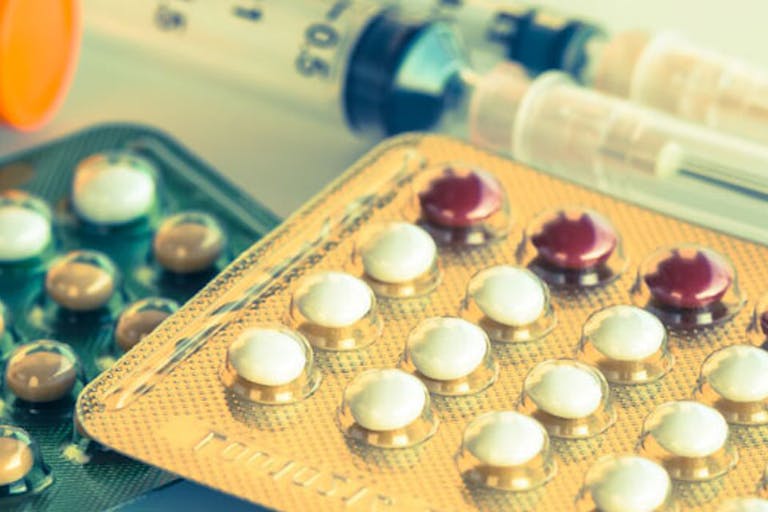
Judge denies anonymity for victim of forced abortion
Cassy Cooke
·
International·By Anne Marie Williams, RN, BSN
For decades, the U.S. has sent unsafe contraceptives rejected by the FDA to developing nations
An eye-opening article from the November/December 1979 issue of Mother Jones suggests that for decades, the United States has had a “double standard” when it comes to “dumping” unsafe contraceptives in developing countries.
IUDs
Throughout the 1970s, hundreds of thousands of dangerous Dalkon Shield IUDs were distributed in 42 developing nations, despite the growing list of documented serious or life-threatening side effects experienced by U.S. women, including pelvic inflammatory disease, sepsis, miscarriages, ectopic pregnancies, uterine perforations, and hemorrhage. Even after the Shields were taken off the U.S. market in 1975 (after at least 17 deaths were attributable to their use), the IUDs continued to be “dumped” overseas by the United States International Agency for Development (USAID) as well as NGOs like the International Planned Parenthood Federation (IPPF) that it funded.
Just as disturbing, many of the IUDs were unsterilized, provided in boxes of 1,000 with only a few applicators and instructions that were not in the language of the people administering or receiving them. This lack of standards was considered acceptable in developing nations because the IUDs were cheaper and aided the goal of population control in order to maintain U.S. economic interests, so USAID officials turned a blind eye. Women seeking care at family planning clinics in Paraguay, Israel, Tunisia, Pakistan, India, and 37 other countries were left to deal with the disastrous consequences.
High dose birth control pills
But Dalkon Shields were only the beginning of unsafe contraceptive “donations” by USAID to developing countries, writes Mother Jones. After that came the “contraceptive inundation program” in the 1970s, which ” disseminat[ed] contraceptives through any outlets, to any and all takers.” USAID and its NGO partners distributed birth control pills to countries like Bangladesh where it was available without a prescription or any medical oversight. Additionally, after U.S. health officials recommended that birth control pill dosage be decreased from 80 mcg to 50 mcg because of health risks, the 80 mcg pills became much cheaper to obtain and were distributed en masse overseas instead of their safer but more expensive counterparts.
Depo-Provera shots
The next phase of the contraceptive inundation program was a population control advocate’s dream. Depo-Provera, an injectable medication that provided contraception for three to six months at a time, did not require any effort or maintenance by users. As an added bonus, many users associated injections with “safe, effective, modern medicine.” But as Mother Jones noted, “The overseas consumer of Depo [didn’t] know that the ‘latest research’ is what prevented the contraceptive from being approved for use in the United States, and that [was] why it [was] being dumped.”
Risks
Article continues below
Dear Reader,
In 2026, Live Action is heading straight where the battle is fiercest: college campuses.
We have a bold initiative to establish 100 Live Action campus chapters within the next year, and your partnership will make it a success!
Your support today will help train and equip young leaders, bring Live Action’s educational content into academic environments, host on-campus events and debates, and empower students to challenge the pro-abortion status quo with truth and compassion.
Invest in pro-life grassroots outreach and cultural formation with your DOUBLED year-end gift!
In research on animals, the shot caused breast nodules and reproductive system cancers. In humans, the shot caused severe bleeding, increased susceptibility to infection, long-term or permanent sterility, and birth defects when given accidentally to pregnant women. In breastfeeding women, it appeared to decrease their breastfed children’s susceptibility to diarrheal illness, a leading cause of infant mortality in impoverished nations.
FDA rejects for U.S., but shot distributed among poor women in other countries
On March 7, 1978, the drug maker’s manufacturer Upjohn received a letter from the FDA stating their decision not to approve the drug for use in the U.S. Despite this, Depo-Provera was distributed for “research” purposes to 8,000 poor women in San Pablo Autopan, Mexico, as well as 120,000 women in Sri Lanka, some 250,000 women in Bangladesh, and hundreds of thousands more in Thailand. One report noted that at an International Planned Parenthood-sponsored clinic in Thailand, each woman was given only 60-90 seconds for “the time to make her ‘free choice’ and have the injection….”
Though the U.S. was not the only Western nation pouring contraceptives into developing Countries, the Swedish International Development Agency (SIDA), to its credit, decided in 1980 to stop distributing Depo-Provera overseas. SIDA found that “[t]he use of Depo-Provera needs continuous medical follow-up by health staff in a well-functioning health system. We know this is lacking in many of SIDA’s programme countries. Without a good health infrastructure, there are risks that the clients are not given enough information to make an informed choice of contraceptive method.”
Safety of shot has not improved
Given that Depo-Provera is now widely used in the United States, one might expect that its safety has drastically improved since the 1970s. This is not the case. Since 2004, the shot has had a black-box warning (used by the FDA to highlight special concerns about a drug) about the shot’s potential to decrease bone density when used long-term in young women. Decreased bone density can lead to bone fractures, and to osteoporosis later in life. This risk is logically compounded in already malnourished women living in less developed nations. These effects may not be reversible after the drug wears off.
Depo-Provera use has also been associated with an up to 40% increased risk of HIV infection, as well as increased risk of contracting gonorrhea and chlamydia, just as it was associated with increased susceptibility to infection almost 50 years ago. As a previous Live Action News article noted, “More than half of the 36.7 million people living with HIV reside in eastern or southern Africa, and DMPA [Depo-Provera] is the primary birth control used in sub-Saharan Africa. It is used by over 50 million women around the world.”
Whereas American women have ready access to treatment options if they experience significant side effects from the Depo-Provera injection or other forms of birth control, women in developing countries continue to suffer to this day from the “beneficence” of Western nations.
“Like” Live Action News on Facebook for more pro-life news and commentary!
Live Action News is pro-life news and commentary from a pro-life perspective.
Contact editor@liveaction.org for questions, corrections, or if you are seeking permission to reprint any Live Action News content.
Guest Articles: To submit a guest article to Live Action News, email editor@liveaction.org with an attached Word document of 800-1000 words. Please also attach any photos relevant to your submission if applicable. If your submission is accepted for publication, you will be notified within three weeks. Guest articles are not compensated (see our Open License Agreement). Thank you for your interest in Live Action News!

Cassy Cooke
·
International
Angeline Tan
·
International
Cassy Cooke
·
International
Angeline Tan
·
Politics
Stefano Gennarini, J.D. and Kelly Heilman, J.D.
·
Politics
Bridget Sielicki
·
Human Interest
Anne Marie Williams, RN, BSN
·
Issues
Anne Marie Williams, RN, BSN
·
Analysis
Anne Marie Williams, RN, BSN
·
Analysis
Anne Marie Williams, RN, BSN
·
Issues
Anne Marie Williams, RN, BSN
·